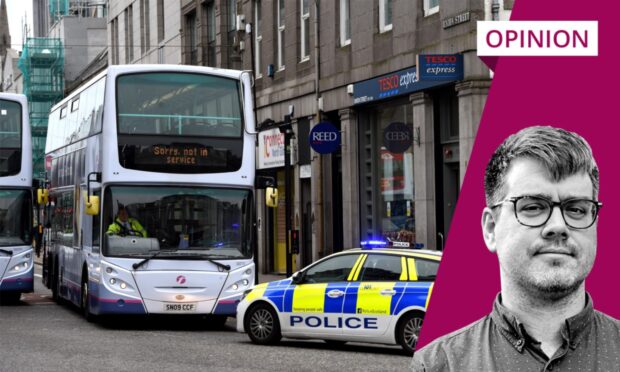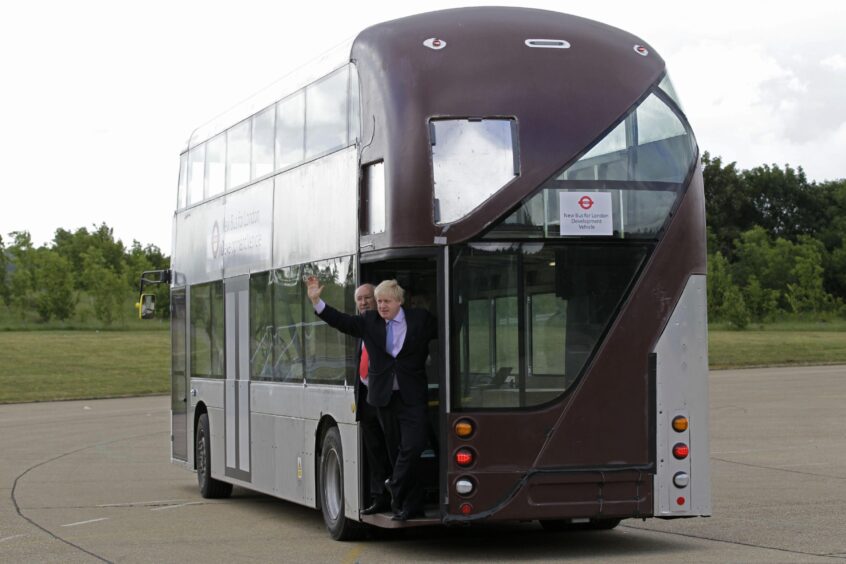I’ve recently been reading ‘Unleashed’, Boris Johnson’s book about his time in politics and his tenure as Prime Minister of the UK.
For someone like me it is mostly infuriating – I was a devout remainer during Brexit and I abhorred the behaviour of Boris’s Government during ‘Partygate’, when many of us were labouring under the stresses of the pandemic.
Not something I’d usually read in order to forget the troubles of the world.
But, it’s not all an exercise in self-induced vexation – his time as London Mayor reveals someone who has a keen mind for the development of the modern urban sprawls we find ourselves in and an interest in public transport infrastructure.
Maybe he does build those model London buses after all…
I’ve found myself thinking of some of the solutions he implemented through his two terms, when walking through our own city, and when digesting some of our recent local news stories.
Cycle lanes, pedestrianization and trains feature in the book; so does bad behaviour on bus services, which he sought to squash when he became responsible for Britain’s biggest public transport network, TfL.
I was aghast last week to read that a child was hospitalized after an attack on a bus on Bridge Street, another example of a number of recent incidents on buses in the region of late, which also sadly includes an Elgin bus driver losing his life.
What happened to Keith Rollinson should never happen again.
Is abuse of people on buses enabled by the free passes?
That means taking practical measures to ensure people are out of the way of danger, and that punishments are appropriate.
The knife attack in Aberdeen happened two weekends ago, on a Saturday night. I walked up the very street on the Saturday following, to meet a few pals for a pint.
Although nothing quite as shocking, Bridge St and the City Centre featured much of the same antics which led to these awful, violent, events.
As I moved down Union St I saw drunk youths fighting and climbing on the rears of moving buses. Throwing projectiles at passing coaches near the Adelphi. Kids gathering in bus shelters, intimidating people just trying to go home.
‘Stagecoach’ is pretty apt for the Wild Wild West, and Union St, sadly, is occasionally not short of the OK Corral.
I know that a long point of discussion has been whether the ScotGov’s free bus passes for those under 22 contribute to this tidal wave of anti-social behaviour.
Granted, not all of it is happening inside buses, but is the abuse enabled by the passes?
Similar problems plagued the London transport network when Boris began as mayor.
The tactic became to remove the passes from persistent offenders and reinstate them via community service.
Do the drawbacks simply outweigh the advantages?
Reports that 84% of Scottish bus drivers have received additional abuse have led to Unite asking for the scheme to be reviewed and we’re all aware of reports in our towns and cities that marauding youths are causing havoc for businesses and citizens.
It pains me to entertain the conclusion that free bus passes should be taken away. It is a progressive, sensible policy that ideally would be rolled out even further.
It’s environmentally friendly and should lead to equality of opportunity.
I’m also resistant to give-in where I know this is more a case of a few bad apples than a rotten tree – a P&J discussion a number of months ago showed exactly the benefits that many get from free transport.
The benefits to students are huge, as they are to many of the city’s younger workforce, lightening the load of the cost of living on their pockets. But, I have to ask myself whether in practice the drawbacks simply outweigh the advantages.
We may spend time talking about bus gates and LEZs but at the end of the day safety is probably even more important to whether folk decide to come into town and spend their hard earned pennies.
No one will leave the house to be intimidated or bullied when trying to have a good time.
These bad behaviours – theft, bullying and criminal damage – are happening in plain sight, which suggests a degree of tolerance for them.
We need to demand a higher standard and expect more police presence in the city centre to catch these blighters, as Boris might say, at it.
That way, those of us who contribute to what is, for the most part, a thriving and safe place to live, may enjoy its major meeting places, without the discomfort of hooligans disrupting the peace.
It also means that those most directly in harm’s way can be kept as far from it as possible, so they can get on with their jobs and lives as easily as they can.
Colin Farquhar works as a creative spaces manager and film programmer in the north-east culture sector


Conversation